I continue my journey of creating foam on drinking chocolate. Since ancient times, bubbly tops have been an important part of drinking chocolate. Mesoamerican codices depict chocolate cups with impressive foam rising up and spilling over the top. Mexican cuisine relishes many traditional chocolate drinks, with some calling for separate foam of different ingredients and contrasting temperature added to the top. This obsession with foam may be a symbol of life (like in fermentation), a way to deliver psychoactive molecules more quickly, or simply an enjoyable texture and badge of skill. Looking up cold foam on the internet shows plenty of modern interest in foams from baristas, bar tenders, and molecular gastronomes. Foam is cool.
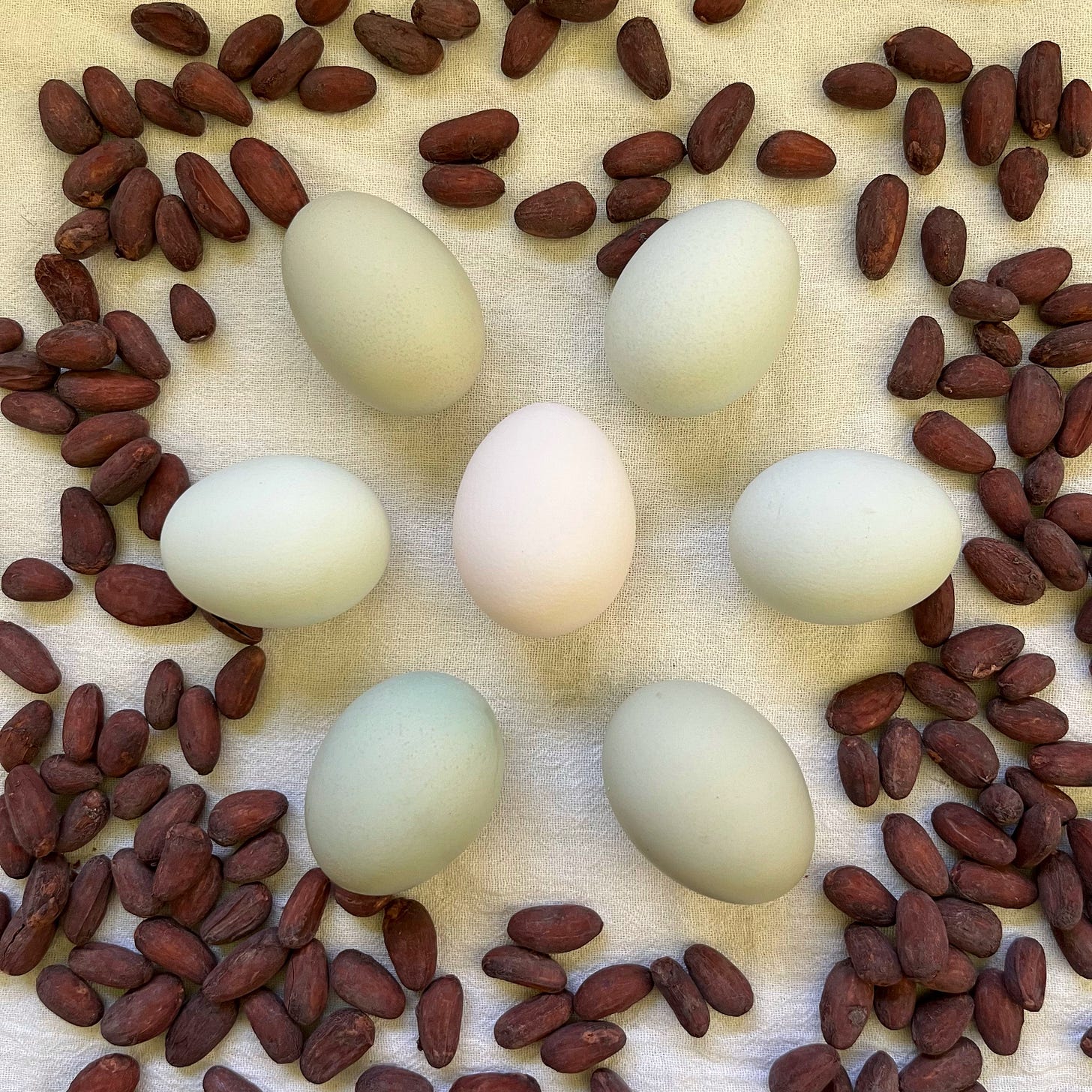
Perusing foam receipts for fun, I came across egg foams used in cocktails and coffee drinks. I was confused at why sometimes the recipes use the whites yet other times the yolks. I decided to try for myself.
I used this recipe for Vietnamese egg foam coffee/chocolate. (Egg foam seems to be huge in Vietnam.) I like this recipe because it uses honey (local ingredients ftw) and gives simple instructions. The recipe calls for egg yolk, but I also tried it with egg whites. Gratitude to our backyard hens for the experimental eggs!
First I made drinking chocolate by whisking 17 grams of 100% chocolate into 1 cup of hot water.
I separated the white and yolk of a fresh 60 gram egg. I added about two teaspoons of honey to each and whisked each with an electric handheld mixer for about 3 minutes for the yolk, and about 5 minutes at higher power for the white.
I divided the hot chocolate into two jars and spooned the foams on top.
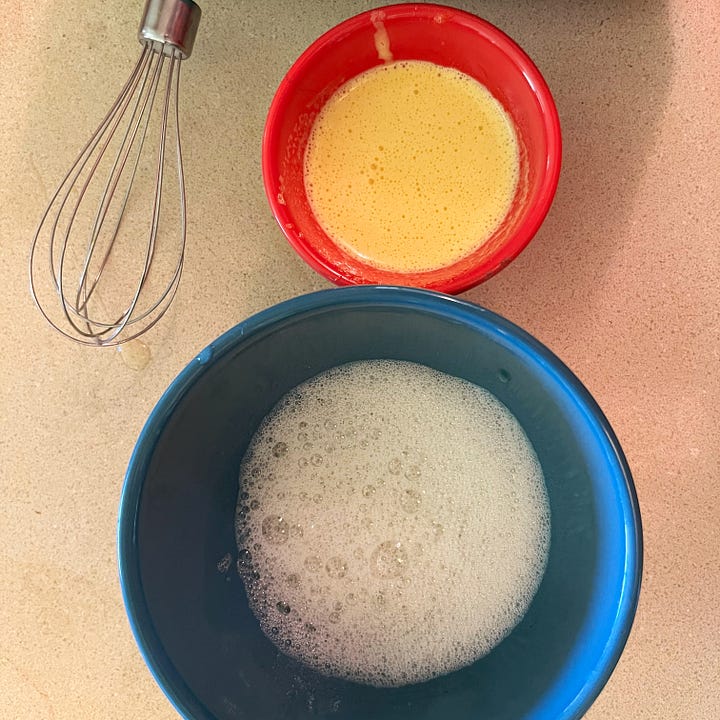
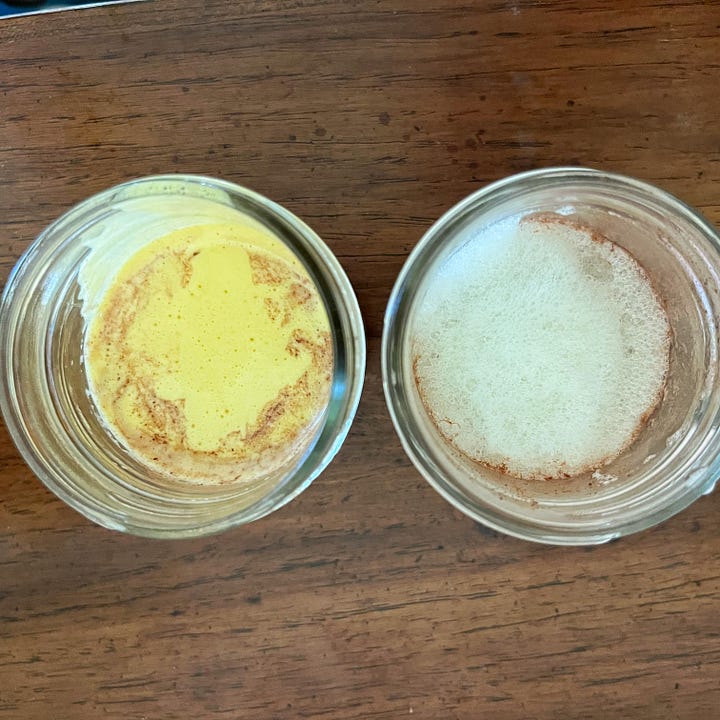
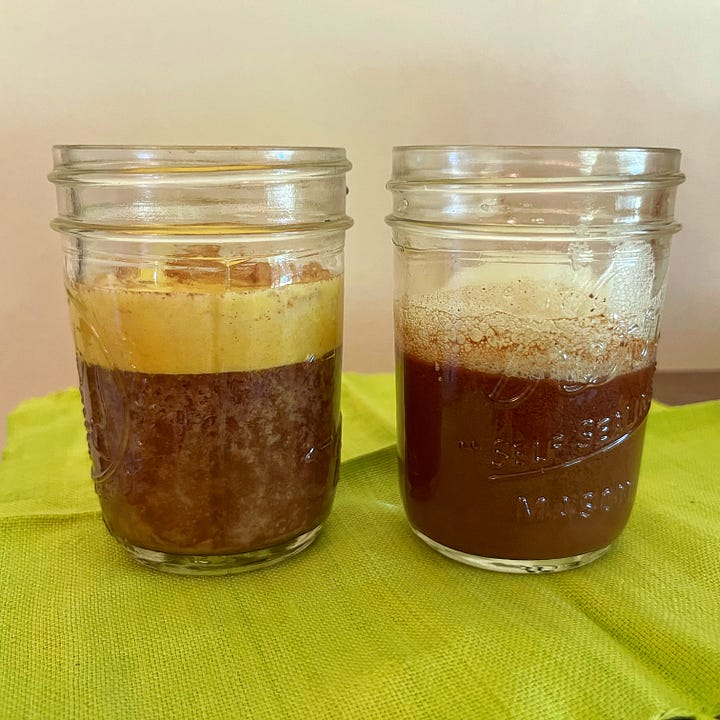
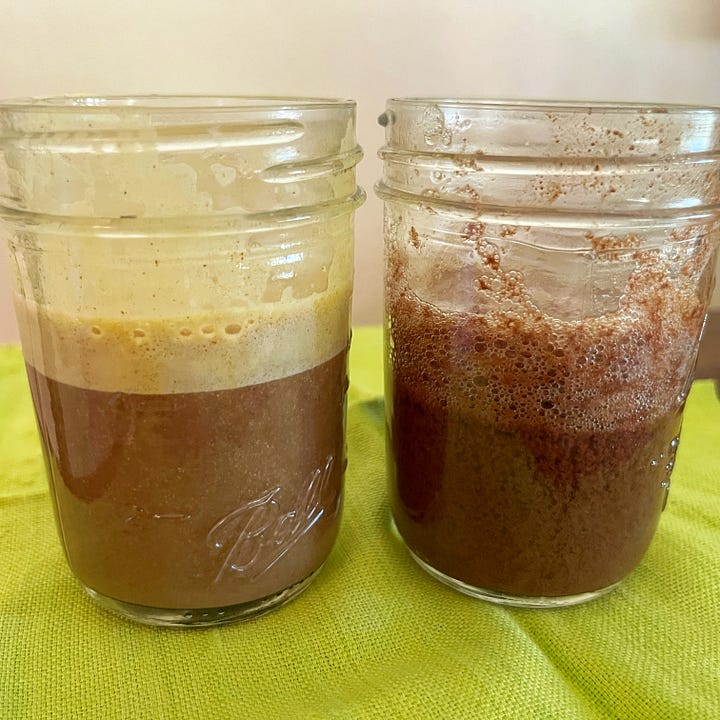
Results: Both the yolk and white made foams, but the qualities were different. The yolk foam had tiny bubbles and was creamy, mixing into the chocolate a bit. The white foam had bigger bubbles and was stickier, more like marshmallow, and voluminous. It hung out on the surface of the chocolate.
Both were delicious. I loved the sweet cold foam contrasting with the warm, unsweetened chocolate. I gave the samples to Jeremy to try. He didn’t like the white foam, saying it smelled “eggy.” (I did forget that he is particular about egg format.)
I then stirred the foams into the chocolate. They persisted impressively, but again with different behavior. The yolk foam mixed into the chocolate but maintained a nice yellow head while the white mostly stayed on top, but took on a chocolate color. The drinking experience of the mixed in foams was more like a sweetened hot chocolate. They were both yummy, but I missed the contrast of both sweetness and temperature that was present before mixing.
I really love these egg foams! My hesitation for making these often is the reputation for raw eggs being not exactly safe. So, I looked into it.
The risk of getting salmonella from a raw egg is low, but still something to consider. People with reduced immunity, including elders and children are advised to not consume uncooked eggs. This includes common uses like homemade mayonnaise and ice cream. Numerous pasteurize-at-home protocols can be found online, and of course there’s a lot of arguing about what is or is not adequate. Not wanting to lose my Hawai'i Master Food Preserver card, I need to advise people to look at what the USDA advises. I found this literature review article interesting, if you want to read more about what science says about methods of pasteurization.
What is your favorite type of foam? What should I try next?
Upcoming events:
Find me at the Big Island Chocolate Festival on Friday April 11 and the Hilo Chocolate Festival on May 10.
My current schedule for the Halakau Farmer’s Market is the 2nd and 4th Tuesdays of the month.




